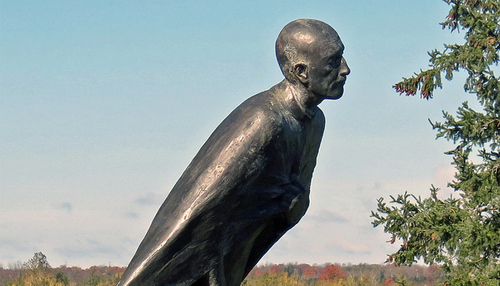
David Fleming’s (re)interprets the “Application of the Senses” in Ignatius’ Spiritual Exercises as a sort of passive resting in the previous meditations.
This series of blog posts adapts the Spiritual Exercises for a pilgrimage (such as the Camino) and for other ways of growing spiritually following the insights of Ignatius.
Here are previous posts in this series – a good place to start:
How to Pray Like a Pilgrim – Camino Lessons from St Ignatius Loyola
Soul of my Saviour
Spiritual Exercises – 19th Annotation Pilgrimage
Pilgrim’s Purpose
Ignatius Four Week Pilgrimage of Prayer
Sin and Hell in the First Week of the Exercises
Ignatius, for the “Fifth Exercise” each day, has an “Application of the Senses”. So, in the case of the “First Week”, meditating on sin and hell, the original text speaks of applying the five senses imaginatively – seeing hell, hearing the wailing, smelling the sulphur, tasting the bitterness of tears, feeling the flames.
I will follow and advocate for Fleming’s approach – a mainstream contemporary practice. [It is not the only way of “Applying the Senses”. Some might follow a more structured, active application sense by sense to a scene being meditated on.] I think it is fair to say that all approaches are trying to bring the whole person into the experience.
Fleming writes:
I bring the whole of my being into the vividness of this experience. I let all the horror of sin which has been the fruit of my previous prayer periods wash over me in an immersing flood. In many ways, this setting is the most passive of prayer experiences; it is not a matter of thinking new thoughts or even of looking for new images, but rather building on the whole experience of sin in which I have immersed myself in the past prayer periods. It is akin to the passive way my senses take in sights, smells, sounds, feelings, as an automatic datum for my attention. I know that the total felt-environment of sin, in whatever ways it can be most vividly mine, is the setting for this period of prayer.
I am suggesting that once one has spent an appropriate time (number of days) prayerfully reflecting on sin and its consequences, including on individual sins and particular personal sinful tendencies, one can – on the Camino, or other context – “bring the whole of my being into the vividness of” being a sinner and needing a saviour.
I found that I could sing (“internally” and out loud) the Taizé chant “Salvator Mundi, salva nos” (Saviour of the world, save us) with the rhythm fitting well to my walking. This was a great way to be more “passively” prayerfully conscious of sinfulness and need of a saviour.
I also tried using the Jesus Prayer for periods (“Lord Jesus Christ, Son of God, have mercy on me a sinner” – or simply “Kyrie eleison” – Lord have mercy). I did struggle to fit this as comfortably into a steady-paced walking.
Do follow
The Liturgy Facebook Page
The Liturgy Twitter Profile
The Liturgy Instagram
The Liturgy Bluesky Profile
and/or sign up to a not-too-often email


